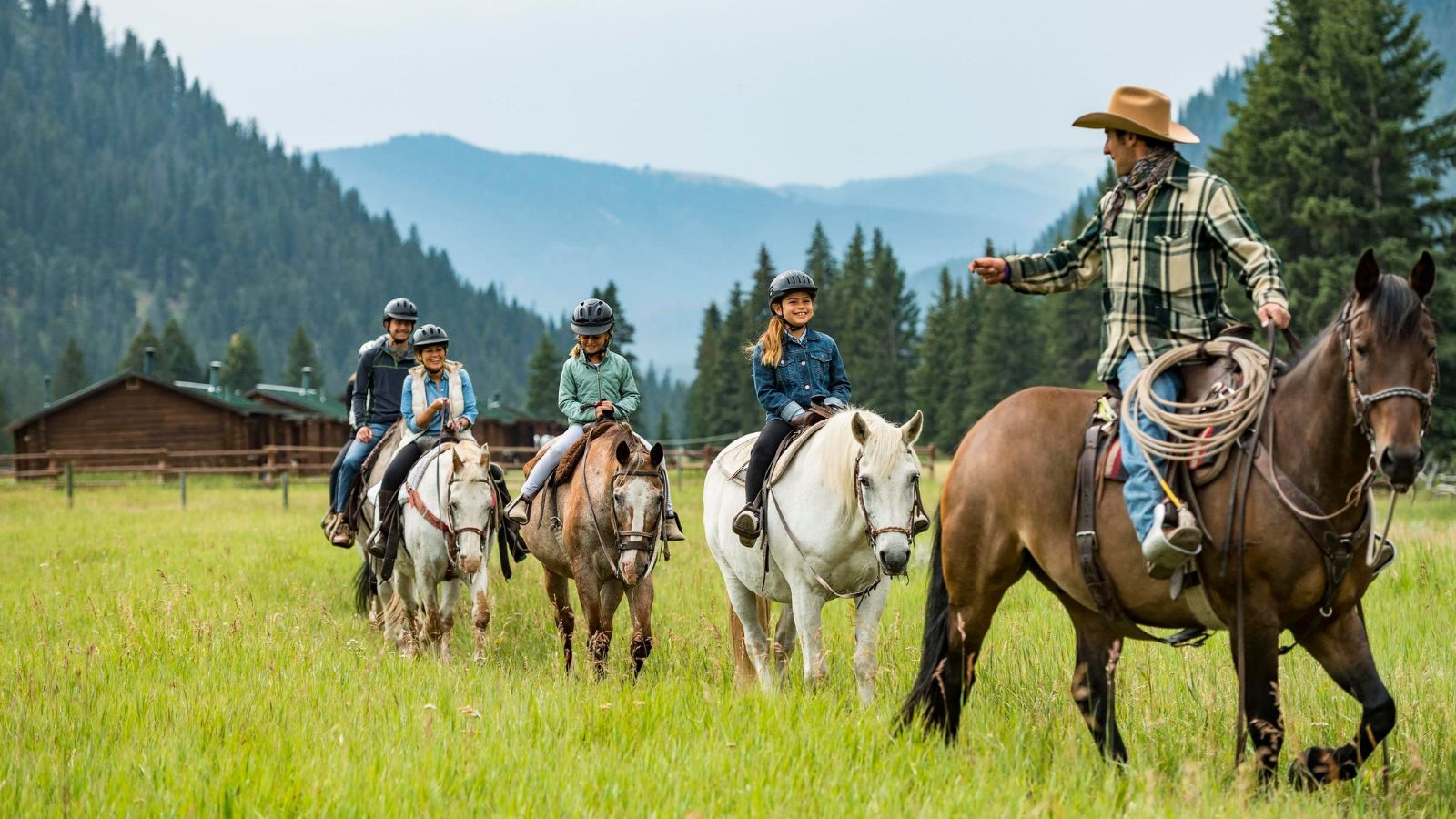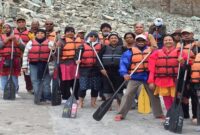Guided tours for seniors offer a unique opportunity to explore the world while accommodating the specific needs and preferences of older adults. This guide delves into the various aspects of creating and operating successful senior-focused tours, from planning accessible itineraries and marketing strategies to ensuring safety and providing exceptional customer service. We’ll examine different tour types, accessibility considerations, marketing approaches, and pricing models, ultimately aiming to provide a holistic understanding of this specialized travel sector.
The focus is on creating engaging and enriching experiences for seniors, highlighting the importance of thoughtful planning and execution to ensure both enjoyment and safety. We’ll explore diverse tour options, catering to a wide range of interests and physical capabilities, with a strong emphasis on accessibility and inclusivity. The goal is to empower tour operators to design and deliver truly memorable travel experiences for this valuable demographic.
Types of Guided Tours for Seniors
Choosing the right guided tour is crucial for ensuring a safe, enjoyable, and enriching experience for seniors. Factors such as physical abilities, interests, and preferred pace should all be considered when selecting a tour. This section will outline various tour options designed with the needs and preferences of older adults in mind.
Categorized List of Guided Tour Options for Seniors
A variety of guided tour options cater to the diverse needs and interests of seniors. Careful consideration of physical capabilities and personal preferences is essential for a positive experience.
- Walking Tours (Shorter, Slower Pace): Ideal for seniors with good mobility, these tours focus on smaller areas, offering a more intimate exploration of a location at a comfortable pace. They often incorporate frequent rest stops.
- Bus Tours: These tours are perfect for seniors with limited mobility, providing convenient transportation and access to various locations. They often feature comfortable seating and restroom breaks.
- Wheelchair-Accessible Tours: Specifically designed for seniors using wheelchairs or other mobility aids, these tours ensure easy navigation and access to all attractions. They often involve ramps, elevators, and accessible transportation.
- Small Group Tours: These tours provide a more personalized experience with smaller groups and more attention from the guide. They are beneficial for seniors who prefer a less crowded environment.
- Private Tours: Offering the ultimate in customization, private tours cater specifically to the interests and pace of the senior traveler. They provide flexibility and personalized attention.
Comparison of Walking, Bus, and Wheelchair-Accessible Tours
The following table compares three common tour types, highlighting their differences in physical demands and duration.
| Tour Type | Description | Physical Demands | Average Duration |
|---|---|---|---|
| Walking Tour | Exploration on foot, covering a smaller area at a leisurely pace. | Moderate to high; requires good stamina and mobility. May involve uneven surfaces. | 2-4 hours |
| Bus Tour | Travel by bus, visiting multiple locations with minimal walking. | Low; primarily involves sitting. May involve short walks to attractions. | 4-8 hours |
| Wheelchair-Accessible Tour | Designed for wheelchair users, ensuring easy access to all attractions. | Low; primarily involves sitting or using a wheelchair. Ramps and elevators provided. | 4-6 hours |
Specialized Tours for Senior Interests
Tailored tours cater to the specific passions and interests of seniors, enriching their travel experience.
- History Buffs: Tours focusing on historical sites, museums, and landmarks, often including detailed historical narratives and anecdotes. Examples include tours of ancient ruins, historical city centers, or battlefields.
- Art Enthusiasts: Tours visiting art galleries, museums, and studios, featuring guided discussions on artistic movements, techniques, and significant artists. Examples include tours of famous art museums or visits to artist studios in specific regions.
- Nature Lovers: Tours focusing on natural beauty, including scenic drives, nature walks (at a slow pace), and visits to national parks. These often incorporate opportunities for bird watching, wildlife spotting, or simply enjoying tranquil landscapes. Examples include tours of botanical gardens, national parks with accessible trails, or scenic coastal drives.
Accessibility and Safety Considerations
Providing accessible and safe guided tours for seniors is paramount to ensuring a positive and enjoyable experience. Careful planning and consideration of individual needs are crucial for creating a welcoming and inclusive environment. This section outlines key aspects to ensure the well-being and comfort of senior participants.
Accessibility Checklist for Tour Operators
A comprehensive checklist helps tour operators proactively address the diverse accessibility needs of senior participants. Failing to consider these needs can significantly impact the enjoyment and safety of the tour. The checklist should be used as a guide and adapted to the specific needs of each tour and its participants.
- Mobility: Ensure accessible transportation, including wheelchair-accessible vehicles and options for those with limited mobility. Plan for appropriate rest stops and pacing throughout the tour. Select venues with ramps, elevators, and wide pathways. Provide assistance with luggage and mobility aids as needed.
- Vision: Offer large-print materials, audio descriptions, and tactile displays. Use clear and concise language, avoiding jargon. Ensure adequate lighting in all locations. Provide visual cues and verbal descriptions of surroundings.
- Hearing: Use amplification systems or provide personal listening devices. Speak clearly and slowly, facing the group directly. Minimize background noise. Provide written summaries of key information.
- Cognitive Needs: Use simple and clear language, avoiding complex instructions or information overload. Provide frequent breaks and opportunities for rest. Consider using visual aids and memory prompts. Offer personalized assistance if needed.
- Other Needs: Inquire about specific needs during the booking process. Accommodate dietary restrictions and allergies. Provide accessible restrooms. Have a plan for managing medical emergencies.
Best Practices for Ensuring Safety and Well-being
Prioritizing safety and well-being is crucial for a successful senior tour. This involves proactive measures and a responsive approach to potential challenges. These best practices aim to create a safe and supportive environment.
- Pre-Tour Communication: Provide detailed information about the tour itinerary, including potential physical challenges, weather conditions, and emergency contact information. Encourage participants to inform the tour operator about any health concerns or limitations.
- Emergency Preparedness: Develop a comprehensive emergency plan, including procedures for medical emergencies, accidents, and inclement weather. Ensure access to first aid supplies and trained personnel. Provide participants with emergency contact information.
- Supervision and Assistance: Maintain appropriate staff-to-participant ratios to ensure adequate supervision and assistance. Train staff in first aid and CPR. Provide assistance with mobility, navigation, and other needs as required.
- Pace and Rest Stops: Plan for regular rest stops and adjust the pace of the tour to accommodate the physical abilities of the participants. Allow ample time for sightseeing and exploration without rushing.
- Environmental Considerations: Be mindful of weather conditions and potential hazards, such as uneven surfaces, steep inclines, and crowded areas. Take appropriate precautions to minimize risks.
Potential Risks and Mitigation Strategies
Different tour types present unique safety risks. Understanding these risks and implementing appropriate mitigation strategies is crucial for ensuring a safe and enjoyable experience.
- Walking Tours: Risk of falls and injuries on uneven surfaces. Mitigation: Choose routes with well-maintained pavements, provide walking sticks if needed, and encourage participants to wear comfortable, supportive footwear.
- Bus Tours: Risk of motion sickness and accidents. Mitigation: Provide ample ventilation, plan for regular stops, and ensure the bus is well-maintained and driven by a qualified driver.
- Day Trips: Risk of fatigue and dehydration. Mitigation: Plan for regular rest stops, provide access to water, and encourage participants to bring snacks.
- Multi-Day Tours: Risk of accumulating fatigue and health issues. Mitigation: Build in adequate rest days, offer flexible itineraries, and provide access to medical care if needed.
- International Tours: Risk of health problems, cultural misunderstandings, and language barriers. Mitigation: Provide comprehensive travel insurance, offer pre-trip briefings, and provide translation services if needed.
Marketing and Outreach Strategies
Reaching the senior demographic requires a tailored approach that considers their preferences and communication channels. Effective marketing involves understanding their needs and utilizing strategies that resonate with this specific audience. This section details strategies for promoting senior-focused guided tours.
Marketing Materials for Senior Demographics
To effectively market guided tours to seniors, marketing materials should highlight the benefits and unique features designed specifically for their needs. A multi-channel approach, combining print and digital media, is recommended. For example, a brochure would provide detailed information, while social media posts offer concise, visually appealing updates.
A brochure would feature high-quality photographs showcasing accessible tour locations and comfortable travel arrangements. The text would emphasize ease of participation, highlighting features like comfortable pacing, accessible transportation, and rest stops. It would also include testimonials from previous participants, contact information, and tour dates/prices. A visually appealing layout with large, clear fonts is crucial for readability.
A social media post would utilize a compelling image or short video showing seniors enjoying a tour. The caption would briefly describe the tour, highlighting key benefits like relaxation, social interaction, and opportunities for learning. It would include a link to the tour website or booking page, and use relevant hashtags to increase visibility among the target demographic. For instance, #seniortravel, #accessibletravel, #grouptours, and #retirementtravel might be used.
Reaching Senior Communities and Organizations
Promoting guided tours directly to senior communities and organizations is crucial for maximizing reach. This involves actively engaging with these groups through targeted outreach strategies.
Specific methods include partnerships with senior centers, retirement communities, assisted living facilities, and organizations serving seniors. Presenting the tour information during community events, workshops, and meetings would be highly effective. Direct mail marketing to retirement communities, using flyers or brochures, could also be beneficial. Collaborating with local newspapers and magazines that cater to seniors to feature articles or advertisements is another avenue. Finally, leveraging existing relationships with healthcare providers or social workers to recommend tours to their patients or clients is a valuable strategy.
Comparison of Marketing Channels
Different marketing channels vary in their effectiveness in reaching senior demographics. Understanding these differences is key to optimizing marketing efforts.
- Direct Mail: While still relevant, direct mail’s effectiveness is declining due to increasing digital adoption. However, it remains a valuable channel for reaching seniors who may be less digitally engaged. Its advantage lies in its tangible nature and ability to convey detailed information.
- Print Media (Newspapers/Magazines): Print media, particularly publications aimed at seniors, can be highly effective. Seniors often trust traditional media sources, making it a credible platform for promoting tours.
- Social Media: Social media platforms, especially Facebook and potentially Instagram, can be used effectively but require careful targeting and visually appealing content. The challenge lies in reaching seniors who may be less familiar with these platforms.
- Partnerships with Senior Organizations: Direct outreach through partnerships with senior centers and organizations offers a high degree of trust and engagement. It allows for personalized communication and targeted delivery of information.
- Word-of-Mouth: This remains a powerful channel, especially within senior communities. Positive testimonials and referrals from satisfied participants are highly influential.
Tour Itinerary Design and Content
Designing a compelling and accessible itinerary is crucial for a successful senior-focused guided tour. The itinerary must consider the physical limitations and interests of the senior participants, ensuring a comfortable and engaging experience throughout the day. Careful planning, including appropriate pacing and rest periods, is essential.
A well-structured itinerary balances engaging activities with ample time for relaxation and breaks. It should cater to diverse interests within the group, offering a mix of historical insights, cultural experiences, and opportunities for social interaction. Accessibility features should be incorporated at every stage, from transportation to the choice of locations and activities.
Sample One-Day Tour Itinerary for Seniors: Historical Charm of Charleston
This itinerary focuses on the historical charm of Charleston, South Carolina, incorporating manageable walking distances and ample rest stops. The pace is deliberately slow, allowing for leisurely exploration and ample time for reflection and discussion. The focus is on engaging storytelling and historical context, presented in a manner accessible and enjoyable for seniors.
| Time | Location | Activity | Description |
|---|---|---|---|
| 9:00 AM – 9:30 AM | Meeting Point: Waterfront Park | Welcome and Introductions | Enjoy a welcoming cup of coffee and pastries while meeting your guide and fellow travelers. A brief overview of the day’s itinerary will be provided. |
| 9:30 AM – 11:00 AM | Rainbow Row & Historic Charleston City Market | Walking Tour: Architectural Wonders and Local Crafts | A leisurely stroll through the iconic Rainbow Row, admiring the colorful historic houses. The tour continues to the City Market, where participants can browse local crafts and enjoy the vibrant atmosphere. The guide will share stories about the history of the houses and the market. |
| 11:00 AM – 11:30 AM | Coffee Break at a Local Cafe | Rest and Refreshments | Enjoy a coffee break at a charming local café, providing an opportunity to relax and socialize. |
| 11:30 AM – 1:00 PM | Charleston City Hall & Waterfront Park | Guided Walking Tour: History and Architecture | Explore Charleston City Hall and learn about its rich history. Continue to Waterfront Park, enjoying the scenic views and learning about Charleston’s maritime past. The guide will share anecdotes and historical facts about Charleston’s development. |
| 1:00 PM – 2:00 PM | Lunch at a Restaurant with Outdoor Seating | Lunch Break | Enjoy a delicious lunch at a restaurant with comfortable outdoor seating. |
| 2:00 PM – 3:30 PM | Fort Sumter Ferry and Tour (Optional) | Fort Sumter Visit (Optional, accessible options available) | For those interested, an optional ferry trip to Fort Sumter is offered, with consideration for accessibility needs. The guide will provide information about the fort’s significance in the Civil War. (Note: This option requires pre-booking and consideration of physical capabilities.) |
| 3:30 PM – 4:00 PM | Return to Meeting Point | Farewell and Departure | Return to the meeting point, allowing time for final questions and farewells. |
Engaging and Informative Content Examples
The content should be presented in a way that is both informative and engaging for a senior audience. Storytelling, personal anecdotes, and historical context are particularly effective. The use of visual aids, such as photographs or maps, can enhance the learning experience.
- Rainbow Row: Instead of simply stating the houses’ history, tell the story of the families who lived there, their occupations, and the challenges they faced. Include details about the unique architecture and the reasons behind the colorful paint.
- Charleston City Market: Share stories about the market’s origins, its role in the city’s economy, and the evolution of the goods sold there. Focus on the human element – the artisans, merchants, and customers who have shaped its history.
- Fort Sumter (if included): Instead of just recounting the battle, focus on the human stories of the soldiers and civilians involved. Describe the conditions they faced and the impact the event had on the nation.
- Waterfront Park: Describe the history of the waterfront and its significance to Charleston’s economy and culture. Share stories about the people who worked on the docks and the ships that once frequented the harbor.
Pricing and Package Options
Developing a financially viable and appealing pricing strategy is crucial for the success of senior-focused guided tours. The pricing structure must balance profitability with accessibility, ensuring a range of options to cater to diverse budgetary needs and preferences among our target demographic. Careful consideration of package inclusions and pricing models is essential.
Pricing strategies should account for the various costs involved in operating the tours, including transportation, accommodation, entrance fees, guide services, and insurance. Furthermore, pricing must reflect the value proposition offered to seniors, considering the specialized needs and preferences of this demographic.
Pricing Strategy for Senior Guided Tours
A successful pricing strategy for senior-guided tours requires a multifaceted approach. It’s important to offer options across different price points to appeal to a broader range of budgets.
- Economy Packages: These packages focus on affordability, emphasizing essential elements like transportation and basic accommodation. They may exclude some optional activities or amenities to keep costs down. Example: A 3-day city tour including basic hotel accommodation, transportation, and guided walking tours of major attractions, priced at $500 per person.
- Mid-Range Packages: These packages offer a balance between value and cost, including comfortable accommodation, a broader range of activities, and potentially some optional upgrades. Example: A 5-day tour of national parks including comfortable hotel stays, guided nature walks, park entrance fees, and one optional upgrade such as a scenic helicopter tour, priced at $1200 per person.
- Luxury Packages: These packages focus on premium experiences, including upscale accommodation, private transportation, exclusive access to attractions, and personalized services. Example: A 7-day European river cruise including luxury cabin accommodation, all meals, guided excursions, and private transportation, priced at $3500 per person.
- Discounts: Offering discounts for early bookings, group travel (e.g., couples, friends traveling together), and repeat customers can incentivize bookings and increase profitability.
Examples of Tour Packages for Seniors
We need to offer a variety of tour packages tailored to the diverse interests and physical capabilities of our senior clientele.
- Relaxing Coastal Getaway: A 4-day tour focusing on coastal scenery, gentle walks, and relaxation. Includes comfortable beachfront accommodation, scenic drives, and opportunities for leisurely activities like birdwatching or simply enjoying the ocean views.
- Historical City Exploration: A 5-day tour centered around exploring historical sites and landmarks. Features guided walking tours at a moderate pace, visits to museums, and comfortable accommodations close to attractions. Emphasis is placed on accessibility and rest breaks.
- National Parks Adventure (Easy): A 7-day tour designed for seniors with moderate mobility. Includes accessible transportation, shorter guided nature walks, and visits to easily accessible viewpoints within national parks. Focuses on scenic beauty and wildlife viewing.
Comparison of Pricing Models
Different pricing models can significantly impact tour profitability.
- Per-Person Pricing: This is a straightforward model, easy to understand and implement. However, it may not fully capture economies of scale achieved with larger groups.
- Group Discounts: Offering discounts for groups increases the likelihood of attracting larger bookings, potentially leading to higher overall revenue. However, careful management of group sizes is necessary to maintain the quality of the tour experience.
- Package Pricing: Bundling services into packages can offer greater value to customers and potentially increase revenue per customer. However, it requires careful consideration of package composition and pricing to ensure profitability.
Post-Tour Feedback and Improvement
Gathering feedback from our senior participants is crucial for refining our tour offerings and ensuring we consistently provide exceptional experiences. A robust feedback mechanism allows us to identify areas for improvement, address potential concerns proactively, and tailor our services to better meet the needs of our valued clientele. This iterative process ensures continuous enhancement and allows us to maintain a high standard of quality.
Post-tour feedback is collected using a combination of methods to maximize participation and gather comprehensive data. We provide both digital and physical options to cater to varying levels of technological comfort.
Feedback Collection Methods and Questions
We utilize a multi-faceted approach to collect post-tour feedback. A short, online survey is emailed to participants following the tour. This survey uses a mix of rating scales (e.g., 1-5 stars for overall satisfaction, ease of accessibility, and safety) and open-ended questions allowing for more detailed responses. Additionally, physical feedback cards are available on the tour bus and at the tour’s conclusion, for those who prefer a non-digital method. These cards feature similar rating scales and open-ended questions focusing on aspects such as tour pacing, guide knowledge, and overall enjoyment. The open-ended questions typically ask about specific aspects of the tour experience, such as: “What did you enjoy most about the tour?”, “What could be improved?”, and “What suggestions do you have for future tours?”.
Feedback Analysis and Improvement Process
Analyzing the collected feedback is a systematic process designed to extract actionable insights.
- Data Compilation: All feedback, both digital and physical, is compiled into a central database. Digital responses are automatically tabulated, while physical responses are transcribed and categorized.
- Categorization and Thematic Analysis: Feedback is categorized into themes, such as accessibility, safety, tour content, guide performance, and overall satisfaction. This helps identify recurring issues or positive aspects.
- Quantitative Analysis: Numerical data from rating scales are analyzed to identify areas of strength and weakness. For example, consistently low ratings for a specific aspect (e.g., restroom accessibility) indicate a need for improvement.
- Qualitative Analysis: Open-ended responses are analyzed to understand the underlying reasons behind numerical ratings. This provides richer context and deeper insights into participant experiences.
- Action Planning: Based on the analysis, a detailed action plan is developed outlining specific improvements to be implemented. This plan includes timelines and responsibilities.
Using Feedback to Enhance Tours
The feedback collected is directly used to improve various aspects of our senior tours.
- Accessibility Improvements: Feedback regarding accessibility challenges (e.g., difficulty navigating uneven terrain, lack of accessible restrooms) informs modifications to future tour itineraries and transportation arrangements. For example, if feedback consistently points to difficulty with steps, future tours might incorporate alternative routes or provide more detailed information on accessibility features in advance.
- Safety Enhancements: Feedback concerning safety concerns (e.g., inadequate lighting, insufficient rest stops) directly influences the development of improved safety protocols and tour modifications. For instance, if feedback highlights concerns about uneven pathways, we can plan routes with smoother surfaces or add additional support for seniors navigating these areas.
- Overall Tour Experience Enhancement: Feedback related to tour content, pacing, guide performance, and overall enjoyment helps to refine the tour itinerary, improve guide training, and enhance the overall senior experience. For example, if feedback suggests that the tour is too fast-paced, adjustments can be made to incorporate more frequent rest stops or reduce the number of locations visited.
Concluding Remarks
Ultimately, the success of guided tours for seniors hinges on a comprehensive understanding of the target audience’s needs and preferences, coupled with meticulous planning and execution. By carefully considering accessibility, safety, marketing strategies, and itinerary design, tour operators can create enriching and memorable experiences that cater to the unique requirements of this demographic. This guide has aimed to provide a framework for achieving this, fostering a growth in high-quality, inclusive travel opportunities for seniors.




